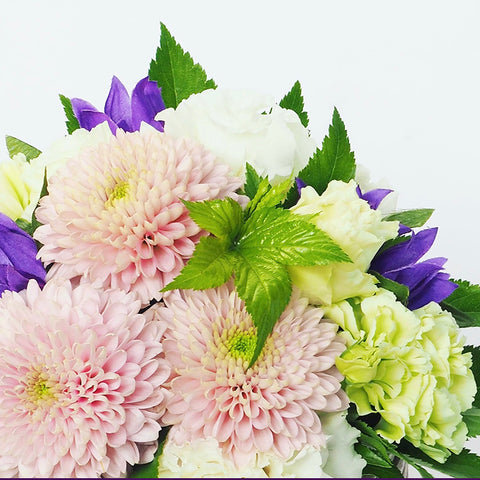How to send flowers as a memorial, as instructed by a florist
Flowers for loved ones and those who have helped you.
May the deceased be surrounded by many flowers.
Flowers are a gift that is given with the hope that they will bring some comfort to the hearts of the surviving family members.
You may be confused by the sudden news.
We have compiled some tips for ordering flowers from a florist so that you can send them calmly and without rushing.
Pillow flowers? Funeral flowers? 49th day?

There are several occasions when you can send flowers as an offering.
There are also timings for sending flowers and common flower colors, so be sure to check in advance.
What are pillow flowers?
These are flowers that are placed at the pillow of the deceased during the wake after they have passed away.
It is made primarily of white flowers.
It is often given by a close relative of the deceased, and may also be arranged by the funeral home.
The average price is 5,000 to 10,000 yen.
Arrangements are often sent in a basket so as not to burden the bereaved family.
What are funeral flowers?
Flowers placed on the altar at a funeral.
Generally, funeral arrangements are made by the funeral home.
When sending flowers, first
It is best to check with the funeral home to see if they can make arrangements.
If you wish to bring flowers arranged at a florist, you will need to check with the funeral home to see if they are allowed.
When doing so, it is a good idea to check the size and color of the flowers to ensure they look unified with the other flowers.
What is the 49th day?
This is a memorial service held 49 days after death, and is also called "Manchuin."
When sending flowers after hearing of the death of someone who has been kind to you, many people send them to coincide with the 49th day memorial service.
The market price is from 5,000 yen.
We recommend using white flowers until the 49th day has passed.
The timing for sending the gift should be the day before, not on the day of the memorial service.
Care must be taken to avoid placing a burden on the family.

After that, some people send flowers at each memorial service, such as the first, third, seventh anniversary, etc.
After the first anniversary, flowers are often made in light pink, yellow, purple, or other colors.
Some people also learn of deaths through mourning postcards that are sent as the end of the year approaches.
In that case, check with the bereaved family and send flowers early.
Obon and Higan

Flower offerings are also given during Obon, when ancestors are welcomed, and during the equinoxes in spring and autumn.
The Obon period is centered around August 15th nationwide.
In Tokyo and parts of the Kanto region, the main date is July 15th.
Flowers are often given before the start of Obon.
However, flowers are easily damaged during hot weather, and if the recipient is not at home, the flowers may be in poor condition.
To ensure that you receive your delivery, it is fine to adjust the delivery date to suit the recipient's schedule.
Additionally, the first Obon after the 49th day memorial service mentioned above is called "Hatsubon," which has a slightly stronger ritualistic meaning than regular Obon.
When sending flowers as a memorial, they are generally made with white flowers since it has only been a short time since the death.

Ohigan occurs in spring and autumn and refers to the three days before and after the Vernal Equinox and Autumnal Equinox (a total of seven days).
During this time, you should express your gratitude to your ancestors by visiting their graves and cleaning their Buddhist altars.
There are no strict rules about flowers, so flowers that evoke the seasons of spring or autumn might be good choices.
Offering flowers gently envelop a somber and sad scene.
Since there are differences depending on the region and sect, it is best to consult with the bereaved family or a florist each time.
Don't forget to express your condolences to the deceased and be considerate of the bereaved family, and send flowers that express your feelings.
Author: Nakanishi Edited by: Yui/Sekido


